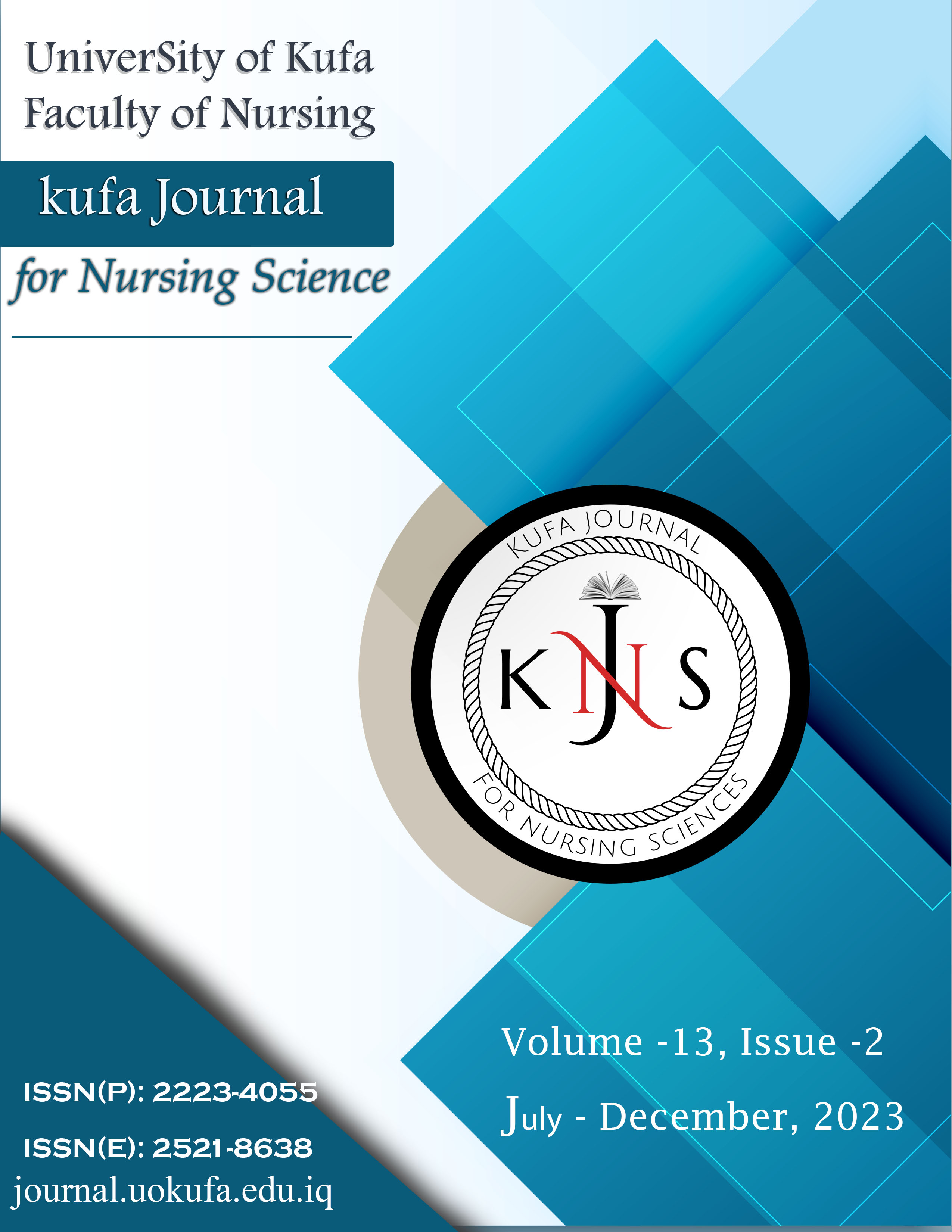Prevalence of Diarrheagenic Escherichia coli and its Relation to Household Factors and Symptoms Distribution among Children in Babylon Governorate Hospitals, Iraq
DOI:
https://doi.org/10.36321/kjns.vi20232.13236Keywords:
Prevalence, Escherichia coli, Association, Symptoms, Babylon Governorate, Household factorsAbstract
Background: Diarrheagenic Escherichia coli, pose a significant threat and have been associated with a range of disorders, including gastrointestinal infections that may develop into various diseases such as diarrhea, Urinary tract infection, septic shock, and meningitis.
Objectives: to determine the Prevalence of E. coli and household factors and symptom distribution associated with E. coli among children under-12 years in Babylon Governorate.
Methodology: Using a descriptive cross-sectional type of study design and a Non-random convenient sampling technique with a proposed sample of 200 children were used to evaluate the Prevalence of Escherichia coli bacteria at two hospitals in the Babylon Governorate. They were: (Babil educational hospital for Maternity and Children and Al Noor Hospital for Children) located in Al Hillah City, the center of Babylon Governorate. This study was performed from October 1st, 2022, to May 1st, 2023.
Results: The majority of participants, 63%, did not have E. coli, while 37% were found to have E. coli. which indicates a high prevalence of E. coli infection among under 12 years children. The highest reported symptom is diarrhea, accounting for 35.40%, followed by vomiting at 20.40%, fever at 16.60%, and loss of appetite at 14.70%. Approximately 33.5% of respondents confirmed that someone in their family experienced similar symptoms during the same period. Families with 4-5 members and 6-8 members were more likely (41%) to have E. coli in comparison to families with 3 members (15.4%). Families with more than 4 children were more likely to have E. coli (100%) in comparison to families with only one child (23.2%). Families with 4 and more rooms were less likely to have E. coli (25%, 0%).
Conclusion: These results indicate that diarrhea followed by vomiting and fever were the highest reported symptoms. Approximately 53% of respondents confirmed that someone in their family or neighbor experienced similar symptoms during the same period. The results also showed that Families with 4-5 members and 6-8 members, Families with more than 4 children, Families with 3 or fewer rooms, Families who raise animals (especially sheep), and family members of the same infected child were more likely to have E. coli with significant association
Downloads
Downloads
Published
How to Cite
Issue
Section
License
Copyright (c) 2023 Ali Majeed Hameed, Wasen A. Ameer Farid, Dheya Shinyar Hamad Al-Saad

This work is licensed under a Creative Commons Attribution 4.0 International License.













